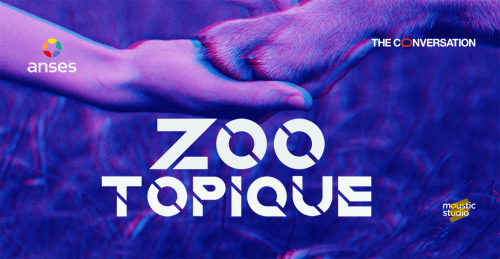
Humans and animals: One Health
The COVID-19 pandemic has highlighted the close connection between animal and human health. For World Health Day, we decipher the science and shed light on our work to help you better understand these interactions within the frame of the One Health concept which includes animals, humans and the environment.
Editorial

Gilles Salvat, Managing Director General and Director of Animal Health & Welfare at ANSES.
"It is not possible to treat human health without taking a close look at animal health, and vice versa"
« In twenty years, we have seen three emerging coronaviruses, SARS, MERS and SARS-CoV-2, all of which were most likely due to an initial contamination by an animal species that served as a bridge between bats and humans. Today, 60% of infectious diseases are common to humans and animals and 75% of emerging infectious diseases are of animal origin. The current COVID-19 epidemic has highlighted these interactions and the fact that it is not possible to treat human health without taking a close look at animal health, and vice versa.
Most of the current emerging threats originate in the tropics, where human intrusion into complex ecosystems has resulted in new viruses jumping from animals to humans. The emergence of infectious diseases from wildlife has placed a spotlight on the concept of "One Health", according to which we share the same planet and the same pathogens and infectious diseases with animals.
Because at ANSES we work at the interface of animal health, food safety and environmental health, we place great emphasis on the continuum between humans, animals and our shared environment. This mainly involves studying the complex interactions between humans and animals, and their role in the transfer of pathogens between species. Specialists in animal health and human medicine need to strengthen their ties because it is in the interest of scientific communities to share their knowledge of pathogens that are subjects of common concern."
Diseases at the interface between animal and human health
Ten key points on the interactions between animal and human health
Every year, three to five new diseases originate in the animal world. Zoonoses, transmission of diseases between species, emerging threats, epizootics and epidemics, etc.
> See a review of these key concepts.
Zoonoses, when animals contaminate humans and vice versa
Several of our laboratories specialising in the study of zoonoses are working to improve knowledge and detect them in animals and food. How are they transmitted, and what types of diseases are involved?
> See all our work on zoonoses.
Coronaviruses, shared by both animals and humans
This family of viruses, which have been thrust into the spotlight with COVID-19, are already well known to scientists, particularly those in the field of animal health. For several years, we have been conducting research into the mechanisms of interspecies transmission of coronaviruses.
The diversity of animal species in complex ecosystems
Wildlife, a reservoir of pathogens
Because they harbour a great diversity of animal species, natural environments are a reservoir of pathogens. Domestic animals and humans do not normally come into contact with them. However, when they do interact with wildlife, transmission can occur. How can we better understand and combat such transmission? Read an overview of our work on wildlife.
Disease vectors
Vector-borne diseases account for 16% of the estimated global burden of human infectious diseases. Lyme disease, Zika, chikungunya, dengue... recent years have seen a re-emergence of the pathogens responsible for these diseases, transmitted by insects such as mosquitoes and other arthropods such as ticks.
Bees, sentinels of ecosystem health
Ninety per cent of flowering plant species depend solely on insect pollinators for their reproduction. The decline of bees, sentinels of our environment's health, could have important consequences for plant diversity and the food supply.
> Find out more about the different issues surrounding bee health.
Animal health in farming
What do we mean by animal welfare?
Good health, a satisfactory level of production for livestock and a lack of stress are not enough to guarantee animal welfare. It is also necessary to consider what the animal feels and its perceptions such as pain and fear, and to look for signs that express positive emotions such as pleasure.
Food safety: from farm to fork
To protect consumers from the risks associated with food contamination and prevent potential outbreaks, it is essential to take action at all stages of the food chain, "from farm to fork".
> Find out more about our role in ensuring food safety.
Antimicrobial resistance
The selection, emergence and spread of drug-resistant bacteria call into question the effectiveness of antimicrobial treatments, which are essential for both humans and animals. Preserving this effectiveness is therefore a genuine public health challenge requiring an integrated approach across all types of medicine.
> Find out more about our work on antimicrobial resistance.
A European research programme on One Health
Coordinated by ANSES, the European Joint Programme (EJP) on "One Health" is seeking to acquire new knowledge in the areas of foodborne zoonoses, antimicrobial resistance and the risks associated with emerging diseases.

As COVID-19 accelerates awareness, Zootopique projects us into a world – sometimes utopian, sometimes dystopian – where mosquitoes help to fight Alzheimer's disease, where the concept of shared cows is a reality and where a jar of honey is worth as much as a work of art. Based on their own work and reflections, researchers take you on a journey to 2031, to understand how science helps us plan for the risks of tomorrow. Discover Zootopique here.